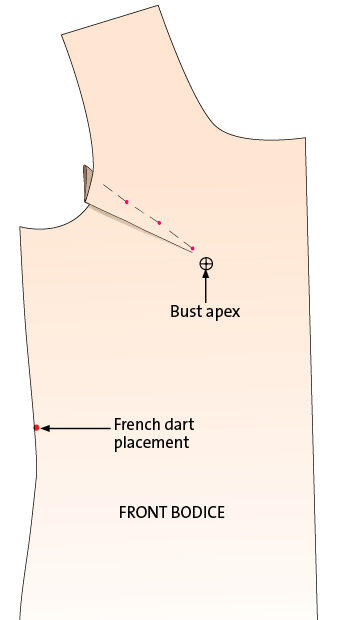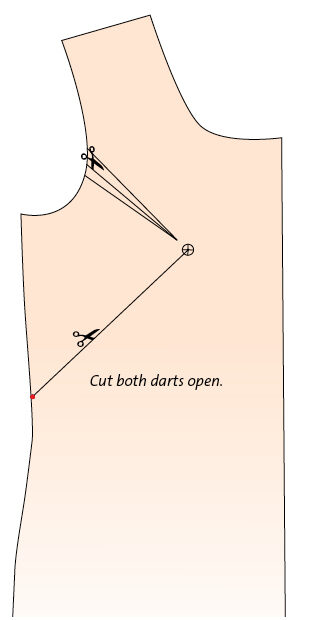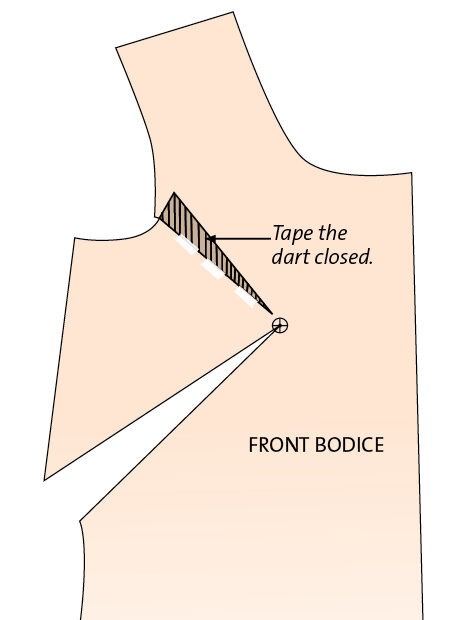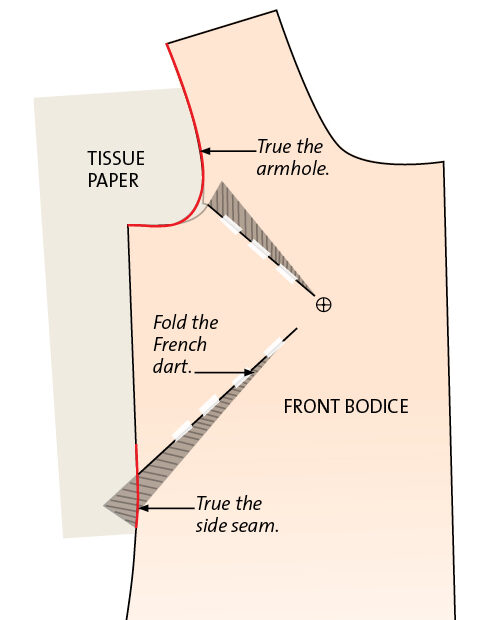
Excess fabric in the armhole is a frequent fitting complaint, especially for sewers who make full-bust adjustments. A poorly fitting armhole can throw off the overall look of a garment. Surplus fabric can cause the bust or upper chest area to be rumpled or cause the lower armhole to gape. This is a problem especially in a sleeveless top. Pinning a dart from the armhole improves the fit. From there, you can easily rotate an armhole dart into a side bust dart, or to take it a step further, into a discreet and flattering French dart. The French dart is a graceful construction element that removes surplus fabric, resulting in a more flattering and stylish fit.
1. Mark your bust apex. Start by constructing a muslin in fabric similar to what you plan to use and put it on. Pinch the excess fabric out at the armhole to form a dart. Aim the dart tip toward the bust point, stopping approximately
1 inch short of it, and pin.
2. Mark the old and new dart locations. Mark the armhole dart legs that you just pinned. Then mark a point on the side seam where you would like the French dart to start.
3. Transfer the armhole dart marking to the pattern. Draw a line indicating the French dart location, from the mark you made at the side seam through the bust apex.
4. Open the darts. Cut along the armhole dart’s center and along the French dart line, cutting to but not through the bust apex, so there’s a small hinge at the apex.
5. Close the armhole dart. Bring the armhole dart legs together and tape the dart closed. The French dart opens.
6. Tape tissue under the armhole and the French dart. Draw dart legs from the side seam to a point 1 inch from the bust apex (for fuller busts, place the dart point 2 inches from the bust apex).
7. True the side seam and armhole seam. Fold the French dart closed with the dart value pointing to the hem. Trim the excess tissue along the side seam.




































Log in or create an account to post a comment.
Sign up Log in